A pharmacoproteomic landscape of organotypic intervention responses in Gram-negative sepsis
- PMID: 37330510
- PMCID: PMC10276868
- DOI: 10.1038/s41467-023-39269-9
A pharmacoproteomic landscape of organotypic intervention responses in Gram-negative sepsis
Abstract
Sepsis is the major cause of mortality across intensive care units globally, yet details of accompanying pathological molecular events remain unclear. This knowledge gap has resulted in ineffective biomarker development and suboptimal treatment regimens to prevent and manage organ dysfunction/damage. Here, we used pharmacoproteomics to score time-dependent treatment impact in a murine Escherichia coli sepsis model after administering beta-lactam antibiotic meropenem (Mem) and/or the immunomodulatory glucocorticoid methylprednisolone (Gcc). Three distinct proteome response patterns were identified, which depended on the underlying proteotype for each organ. Gcc enhanced some positive proteome responses of Mem, including superior reduction of the inflammatory response in kidneys and partial restoration of sepsis-induced metabolic dysfunction. Mem introduced sepsis-independent perturbations in the mitochondrial proteome that Gcc counteracted. We provide a strategy for the quantitative and organotypic assessment of treatment effects of candidate therapies in relationship to dosing, timing, and potential synergistic intervention combinations during sepsis.
© 2023. The Author(s).
Conflict of interest statement
The authors declare no competing interests.
Figures
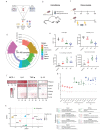
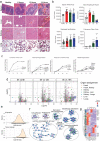
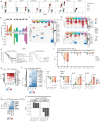
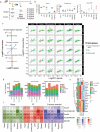
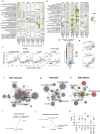

Similar articles
-
Coagulation factor protein abundance in the pre-septic state predicts coagulopathic activities that arise during late-stage murine sepsis.EBioMedicine. 2022 Apr;78:103965. doi: 10.1016/j.ebiom.2022.103965. Epub 2022 Mar 27. EBioMedicine. 2022. PMID: 35349828 Free PMC article.
-
Cefiderocol: A Siderophore Cephalosporin with Activity Against Carbapenem-Resistant and Multidrug-Resistant Gram-Negative Bacilli.Drugs. 2019 Feb;79(3):271-289. doi: 10.1007/s40265-019-1055-2. Drugs. 2019. PMID: 30712199 Review.
-
Impact of previous antibiotic therapy on outcome of Gram-negative severe sepsis.Crit Care Med. 2011 Aug;39(8):1859-65. doi: 10.1097/CCM.0b013e31821b85f4. Crit Care Med. 2011. PMID: 21499086
-
Integrating rapid diagnostics and antimicrobial stewardship improves outcomes in patients with antibiotic-resistant Gram-negative bacteremia.J Infect. 2014 Sep;69(3):216-25. doi: 10.1016/j.jinf.2014.05.005. Epub 2014 May 17. J Infect. 2014. PMID: 24841135
-
Evidence for antibiotic-mediated endotoxin release as a contributing factor to lethality in experimental gram-negative sepsis.Scand J Infect Dis Suppl. 1996;101:3-8. Scand J Infect Dis Suppl. 1996. PMID: 9060044 Review.
Cited by
-
Generalized precursor prediction boosts identification rates and accuracy in mass spectrometry based proteomics.Commun Biol. 2023 Jun 10;6(1):628. doi: 10.1038/s42003-023-04977-x. Commun Biol. 2023. PMID: 37301900 Free PMC article.
-
Machine learning-based transcriptmics analysis reveals BMX, GRB10, and GADD45A as crucial biomarkers and therapeutic targets in sepsis.Front Pharmacol. 2025 Mar 31;16:1576467. doi: 10.3389/fphar.2025.1576467. eCollection 2025. Front Pharmacol. 2025. PMID: 40230692 Free PMC article.
-
Proteomic Profiling of Acoustically Isolated Extracellular Vesicles from Blood Plasma during Murine Bacterial Sepsis.J Proteome Res. 2025 Aug 1;24(8):4126-4138. doi: 10.1021/acs.jproteome.5c00267. Epub 2025 Jul 11. J Proteome Res. 2025. PMID: 40641435 Free PMC article.
References
Publication types
MeSH terms
Substances
LinkOut - more resources
Full Text Sources
Medical
Molecular Biology Databases
Miscellaneous

